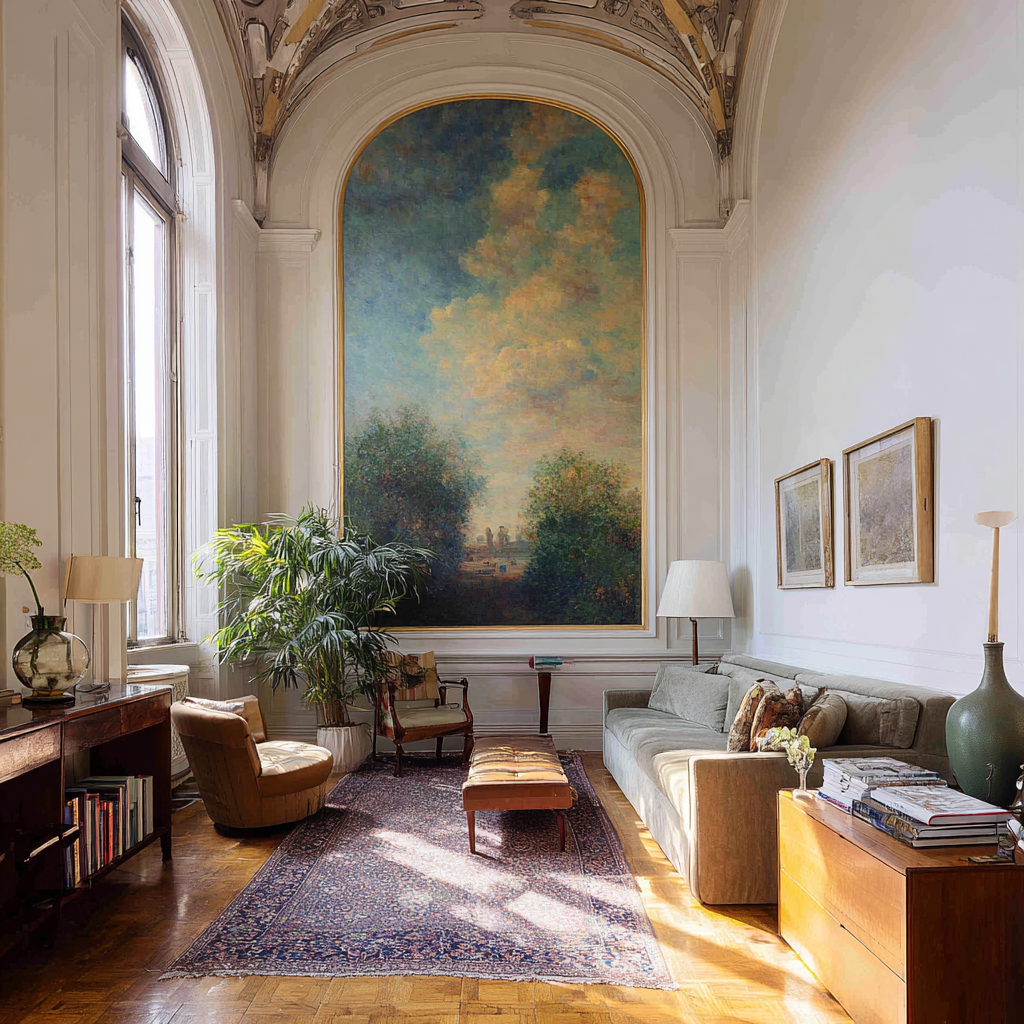When it comes to interior design, artwork is more than decoration—it’s a tool that shapes atmosphere, defines space, and influences how we use a room. While small pieces add detail, large-scale artwork has a transformative impact that can make a space not only more beautiful but also more functional. Designers consistently highlight the power of oversized art to anchor rooms, balance proportions, and even improve the way we live within our homes.
A focal point makes furniture arrangement easier, guiding flow and orientation in open spaces. Large artwork naturally draws the eye and gives a room an instant centerpiece. Instead of competing with multiple smaller objects, one substantial piece can simplify visual clutter and provide balance. Interior designer Nate Berkus emphasizes that oversized art “grounds a room and gives it soul” (Elle Decor, 2017).
Properly scaled art prevents rooms from feeling cavernous, making large spaces more comfortable and inviting. Large artwork helps define scale in rooms with tall ceilings or wide walls, ensuring the space doesn’t feel empty or disproportionate. According to Architectural Digest, designers often use oversized canvases in lofts and open-plan homes to create harmony between architecture and furnishings (2019).
Clever placement of oversized art can visually expand smaller spaces or balance awkward architectural features. Unlike smaller pieces, large works can shift the perception of a room’s depth and size. A bold seascape can make a wall recede, while an abstract with strong vertical lines can emphasize height. As design writer Judith Miller notes, “art has the ability to alter the perception of a room’s proportions” (Decorating with Art, 2014).
Art helps organize multipurpose spaces, making them easier to navigate and use. In modern open-plan living, large art serves as a divider without walls. A striking piece above a sofa can delineate a “living zone,” while a bold canvas in a dining area sets it apart within the same footprint (House Beautiful, 2021).
Mood-setting art can influence how we use a space—promoting relaxation, creativity, or focus. Art is emotional, and larger works amplify that effect. A serene landscape can infuse calm into a bedroom, while vibrant abstracts inject energy into a workspace. Designer Kelly Wearstler calls art “the emotional heartbeat of a room” (Vogue Living, 2018).
Fewer objects mean easier maintenance and less visual noise, allowing the space to function more efficiently. One large piece can replace the need for multiple smaller decorations, streamlining a room’s design. This aligns with contemporary minimalist approaches where “less, but better” creates cleaner, more functional spaces (Kinfolk Home, 2015).
Large artwork isn’t just about style—it’s about how a space feels and functions. By providing scale, focus, and emotional resonance, oversized art helps a room become more intentional, livable, and inspiring. Whether you’re designing a cozy apartment or a sprawling home, investing in a statement piece of art can transform both the beauty and utility of your space.
Sources Cited
Berkus, Nate. Quoted in Elle Decor, 2017.
Architectural Digest. “How Designers Use Oversized Art in Interiors.” 2019.
Miller, Judith. Decorating with Art. Hearst Books, 2014.
House Beautiful. “Design Tips for Open-Plan Living.” 2021.
Wearstler, Kelly. Interview in Vogue Living, 2018.
Kinfolk. The Kinfolk Home. Artisan, 2015.

